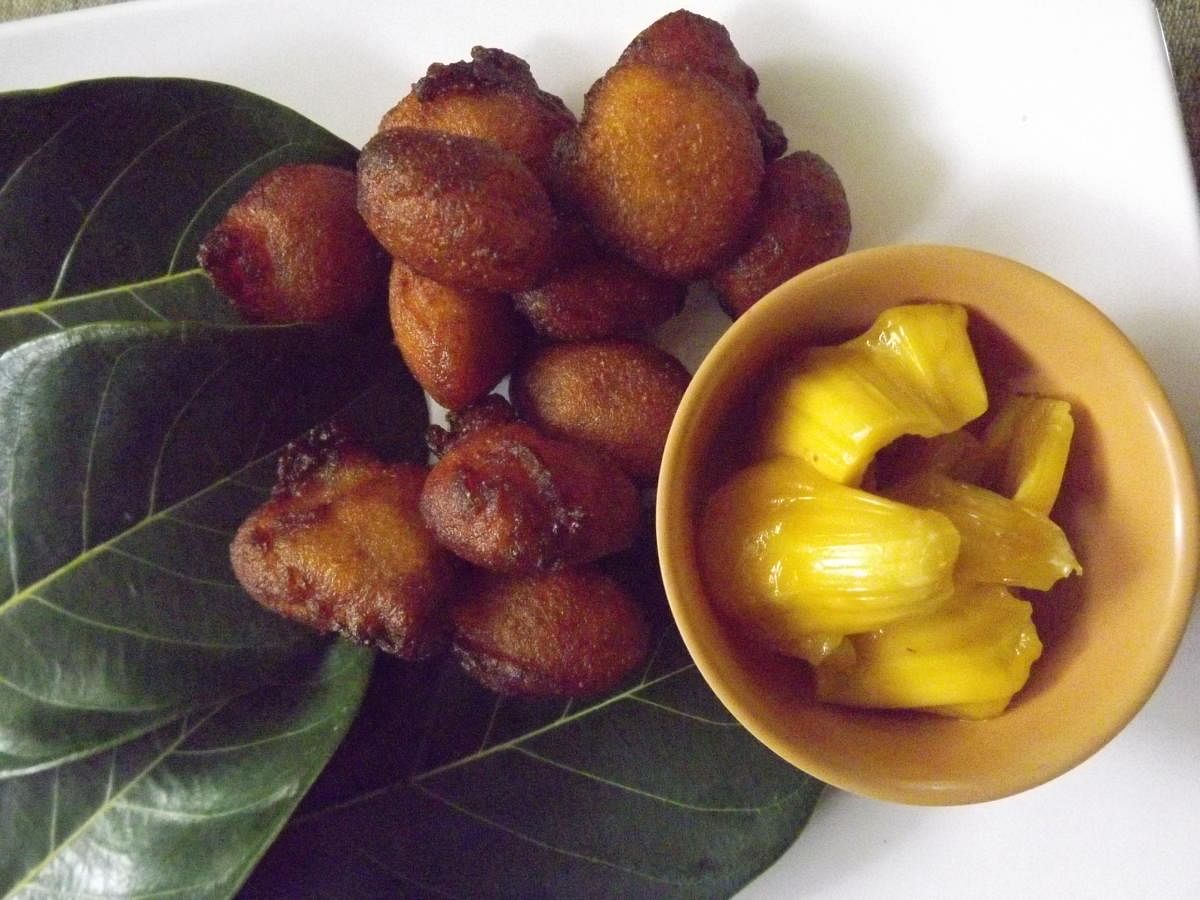
The name of a temple town in Karnataka has become synonymous across India (and many parts of the world) with its delectable cuisine and a wide range of dishes. The unique Udupi vegetarian cuisine is wholesome, clean, ritually pure, and suits all purses and tastes.
A variety of dosas and idli fortified by appetising sambar is the staple of a Udupi restaurant and can be savoured at any time of the day. There are other typical snacks like urad dal vada, chana dal vada, pathrode (made from colocasia leaves), goli baje, Sajje rotti (made from semolina), niruli baje (onion pakoda), balekai podi (banana fritters) banana buns (Mangalore buns), brinjal fritters, garige (jackfruit fritters) to name a few.
Typically, Udupi restaurants have a set menu of only one type of meal which means everybody gets to eat the same thing. A full meal with several items served on a banana leaf is also very different from other South Indian meals. A ‘mini meal’ is a truncated version and a euphemism for a working lunch. There are many anecdotes about the origin and growth of Udupi restaurants beginning in Bombay (now Mumbai) and later spreading to other parts of India. Udupi restaurants made their debut in Bombay around 1915 and became popular after the First World War.
K Venkappaiya, one of the earliest to start a Udupi restaurant in Bombay, hit upon the idea by accident. He had travelled from his village in Udupi to witness the Delhi durbar of King George V in 1911. On his way back he halted in Bombay and overheard some soldiers from Coorg complaining about the difficulty of obtaining South Indian food. He decided to cash in on this opportunity, and seek his fortune in the city. He was in the vanguard of a catering revolution.
In modern business terminology, the words ‘repurposing’ and ‘redeployment’ are often used. Udupi restaurants are pioneers in the most direct and commercially successful ‘redeployment’ of traditional priestly cooking skills to the modern world. Udupi and the surrounding region have a strong tradition of religious
mass feeding and pilgrim management. The Udupi Brahmins adapted this model of hospitality to a model for secular catering.
Kadandale Krishna Rao became the first major hotel owner from Udupi. He was born in 1898 in Kadandale village of Udupi district. His father was a small landowner, priest, and ayurvedic practitioner. He received little formal education as his parents took him out of school to help with family chores. His work in food service began when an uncle managed to get Krishna Rao a job in Puthige Mutt in Udupi. Later, he worked in another Mutt as an attendant of the Swamiji and a small nearby restaurant.
In Madras, he worked first as a domestic servant and then joined Sharada Vilas Brahmins Hotel in George Town as a Kitchen boy. In 1925 his employer offered Krishna Rao one of his restaurants for Rs 700, to be paid in monthly instalments. He quickly made his new business a success. He opened several restaurants in Madras (Chennai) and expanded his operations to Bangalore, Coimbatore, Salem, Ahmedabad, Bombay as well as in London, New York, and Singapore.
K Seetharama Rao, who was born in 1899 in Kuthethoor village, also founded a group of successful restaurants and hotels. Though educated, he had a menial salaried position in Mangalore. He joined his brothers’ tiffin business in Mysore (Mysuru) in 1921. Soon, he expanded his restaurant chain from Mysore to Madras. What gave a fillip to the Udupi restaurant business, youth from Udupi, who lacked employment opportunities, migrated to Mumbai, Madras, Mysore, and Bangalore as many restaurants were established in the 1930s and 1940s. While the affluent started restaurants, others worked as cooks, cashiers, waiters, and kitchen help. Some of the employees later started their own restaurants. The Second World War also favoured Udupi restaurants in Mumbai. While traditional fare continues to dominate the menu, they have been updated over the years adding local cuisines of the places where they are established and even western staples like pizza. Some restaurants also serve chaats. Even the idli comes in variations such as the soft mallige idli.
The nomenclature has also changed with the word from the traditional ‘Bhavan’ to ‘Sagar,’ ‘Uphaar,’ ‘Utsav’, ‘Vaibhav’ and even ‘Grand,’ ‘Gardenia,’ ‘Palace,’ ‘Park’ and ‘café’ added to Udupi.
Udupi restaurants were quick to adopt the fast food model with numerous darshini type of restaurants mushrooming in Bengaluru and other places. The ‘fast service’ concept was not new to entrepreneurs from Udupi. The mass feeding event at the bhojana shala of a temple in this region has similarities to the service at Udupi restaurants. Feeding takes place quickly and efficiently. Each server comes in rapid succession and the efficiency with which the food is cooked in the kitchen and served has percolated to the operation of a Udupi restaurant — fast ordering, fast service, fast clearing, and fast billing.
Despite modernisation, the affiliation of their owners to their hometown remains staunch. A part of the profit which they generate from their business is used to renovate temples in their respective villages. A few restaurants also keep a
donor box at the cash counter.
Udupi restaurants have spread beyond the borders of India. Today, there are Udupi restaurants in many parts of the world where there is a concentration of South Indians. There are now several Udupi restaurants in New York City, California’s Silicon Valley, UAE, Singapore, and Hong Kong.